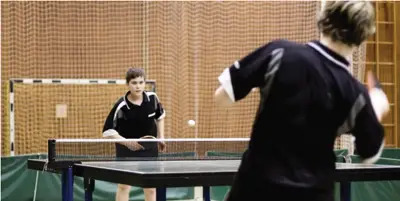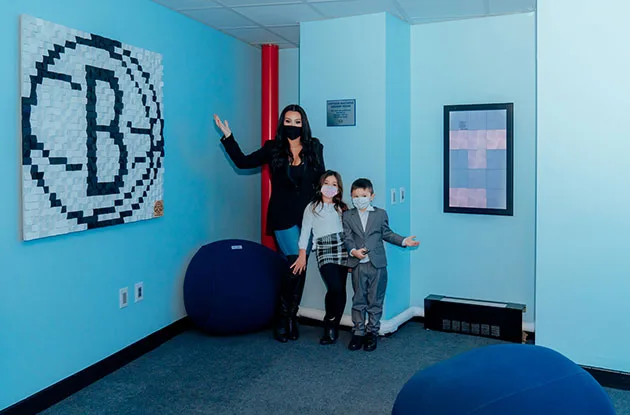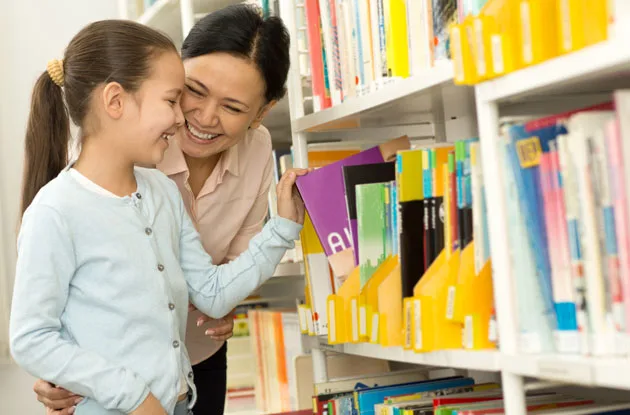When your hopes of raising a mini Derek Jeter are dashed by a child’s noninterest in sports, you can still find ways to bond through athletics.

For most parents, their child’s athleticism, or lack thereof, is a moot point. But occasionally you’ll meet the sports-obsessed dad who has waited since birth for the moment his son could start playing baseball, or the mom who always wanted to coach her daughter’s soccer team. What happens when their child fails to meet their athletic expectations? How can they bond?
Realizing that your son or daughter has the clumsy coordination of a newborn foal may be disappointing, but it doesn’t mean you’ll be stuck on the sidelines – nor should you be, advises Dr. Joanna Dolgoff, a Manhattan pediatrician. But you should ratchet down your expectations a notch (or two, or three!).
“Exercise is important to help children maintain a healthy body weight and to prevent many different diseases, including heart disease, diabetes, and stroke,” says Dolgoff, who blames the childhood obesity crisis on Americans’ sedentary lifestyle. “Helping children become active at an early age can encourage them to stay active later in life,” she says.
For the Competition-Averse
Many kids develop at different physical rates, which can make competitive sports difficult. That’s why Doreen Foxwell of The Children’s School of Yoga, which has locations throughout New York, recommends activities like yoga, which can be done by children of any shape, size, or athletic ability.
Before registering children for classes, parents should make sure that instructors are certified through a children’s yoga program. For sensitive children who dislike competitive or overbearing coaches, yoga instructors – who tend to be more holistic and, to some, more approachable – can be great role models. Many studios offer parent-child classes, which will help you build your flexibility while your child builds hers.
“Teaching yoga to children versus adults is very different,” Foxwell notes. “Not all yoga teachers are meant to teach children. It takes a very special yoga teacher to be able to create an imaginative, fun yoga class geared for kids.”
Finding Fun Alternatives
Dancing is another great activity for parents and children to engage in together. It allows children to learn about their parents’ tastes in music. It also gives more artistic and creative children a chance to dress up in costumes and shake some instruments. Other indoor activities like ping-pong, air hockey, foosball, or billiards can help children build the self-esteem necessary to try other sports later in life. Above all, experts stress allowing children to find an activity that they enjoy.
Some, including Dr. William Germano, the performance director and managing partner of CATZ of Long Island, a training center for athletic children, feel that the years prior to third grade are the most important for finding physical activities for children to enjoy. The key, Dolgoff says, is to make each activity about having fun instead of about exercise.
“Don’t force a child to exercise in front of peers if he or she is uncomfortable,” Dolgoff says. “Explain that the more your child moves, the easier it becomes. Parents should also explain that they weren’t always athletic, or that they are not athletic and want to learn how to become more athletic with their child.”
With New York’s proximity to water, many families may choose to rent kayaks and participate in other water sports. Picking out a kayak is relatively easy. Families need to know what type of water they’ll be paddling in and the kind of adventure they want. Young children may like easy rides, which recreational kayaks are designed to foster. Tandem kayaks allow parents to do most of the paddling until the child feels comfortable. Many children who don’t excel at other sports can strengthen their core muscles and upper body through kayaking.
More Easy Bonding Ideas
Activities don’t have to be complicated or involve renting equipment for kids and parents to enjoy each others’ company. For those who would like to get outside, parents can plan day trips to go hiking in places like Breakneck Ridge, which is a short train ride from Grand Central station. Getting outside for a hike or nature walk is a great way to slow down. Those who live in a more metropolitan area might add a competitive aspect to their activities by wearing pedometers, which allow those who wear them to measure the number of steps they take and the distance they cover. Bike rides also build bonding experiences. Many times, families can turn some of these activities into day trips that also involve picnic lunches and other activities that kids – and parents – will enjoy. Try some familiar favorites that parents will remember from their childhood: Hide-and-go-seek, freeze tag and running bases are all activities that generations of kids have enjoyed for decades.
“If parents encourage their child to go outdoors with other children,” Germano says, “chances are they’ll come up with something on their own to keep themselves active and engaged.” It may never be the major leagues (or even the pee-wees), but remind yourself that it’s your child’s dreams that matter – and upping his level of activity, even if he shuns typical competitive sports, is the key.
Find the best events for kids and families this month in our Online Calendar.





















